To make for an easier border crossing back into Jordan, we investigated the early payment of our departure tax this morning. This was recommended online as a streamlining process for the crossing, so we thought we’d get on it. Odd that the staff at the hotel didn’t know what the departure tax was, let alone where we would be able to sort it out. In the cold and rain we trudged out to the Postal Bank and found someone who firstly knew what it was, and secondly how to take the money from us and give us a voucher in return (175ILS, about $60AUD). A bit of effort, but it did make things easier at Allenby Crossing.
Yad Vashem
Caught the light rail to Mount Herzel to Yad Vashem, the World Holocaust Remembrance Centre. It was a cold and miserable day with heavy fog shrouding everything, and sight was only clear for 10 metres in front of us. There were many buses and tour groups, and with our focus of departure tax payment this morning, we hadn’t got to the museum as early as we would have had liked. There were already crowds at 10am, so we had to grab opportunities in corners of the displays where we could read and listen. Our focus, as is usual for us in these places, was to give our attention to the interviews with survivors and read and listen to the personal stories. The history lesson we are already familiar with, but it’s the faces and their horrors that we have come to learn about and grieve for.
There were a number of filmed interviews with survivor Sinai Adler on display throughout the museum. He became a rabbi, and in all of his stories, he is smiling, which does strike you as unusual when watching the footage. In the final interview, he says this, “It saves me, being able to smile. Otherwise, I would be crying endlessly.”
Another man, Roman Frister, was a polar opposite to Sinai Adler. He was so clearly damaged, and struggled every day with what he had experienced and what he had to do to survive. He acknowledges that there were heroes in these atrocities, but that he was not one of them. To survive, he had to become a ‘predator’. One example he gave was that one night his hat was stolen. He knew that if he went to the line up the next morning without a hat, he would be killed, so he crept bare foot through the barracks, found a hat sticking out from someone’s bed and gently took it. The next morning, he had a hat on, and in the silence of the line, there was a single gunshot. He didn’t turn to see, because he did not want to ever know the face of the man whose death he had caused.
The main thing he punishes himself for is when in the line up his father fell to the ground. He did not help him because those who helped others were killed. He left him on the ground. His father was taken to the ‘hospital’ where he died a few days later of typhus. He carries that grief and guilt with him even now, so clearly worn on his face.
After three hours, it was time to move on. We find that three hours is usually our absolute limit with museums and galleries of substance, no matter the content, and this one was harrowing.
Machane Yehuda Markets
We caught the light rail back to the city centre and spent some time wandering the Machane Yehuda Markets before pausing mid-exploration in search of a place to eat. We popped into one of the many food stalls and restaurants lining the market laneways, a Lebanese restaurant called Manou Ba Shouk. We tried the house specialty of Khidra – rice with vegetables and chickpeas baked in the oven. It came out on a tray with salad drizzled in tahini and was in a pot with a lid. The waiter shook the pot and upended it on the tray for us to dig in. It was bloody delicious! So glad we listened to him and dumped our original order of a Lebanese pizza and a salad…and his recommendation was cheaper! He wasn’t trying to up sell, he just wanted us to have the best experience in his restaurant…and he succeeded!
Of course, the markets (shuk) are popular with tourists where you can immerse yourself in the Israeli vibe, but with over 250 vendors it’s where locals do their shopping. I would LOVE such a place to get my groceries! The produce is so fresh and the vendors friendly – it’s a social experience just buying vegetables!! A wide selection of tours are available: classic tour, graffiti and nightlife tour, alcohol and bars tour, bakery tour, wine and cheese tour, chef-guided tasting tour, shuk cooking workshop, and Selichot tour. If the day had not been so cold and wet, we would’ve indulged, but we would’ve had trouble deciding which one!
Machneyuda
Machneyuda is one of the finest restaurants in the city, and it exceeded all expectations. I made the reservation a few months before the trip, and only got in because we wanted to eat so early. So we were there 5 minutes early for our 6:30pm sitting, cause if you are more than 20 minutes late, they give your table away. They were yet to open and there were a whole bunch of eager patrons waiting outside. Chef and sous chef were also out in the cold having a cigarette and a chat before starting work. They were about 5 minutes late opening because they have this ritual that is about putting the music on loud and all staff downing shots of arak together before the madness all begins.
I had expected a place more formal than this, and I am really glad I was wrong. It was a wonderfully relaxed and funky place that was a cross between something in Surry Hills and Newtown. Surry Hills for its inventive menus and presentation, Newtown for its laidback retro cool factor. And the cross-fertilisation works. Machneyuda takes only two things seriously – food and having a fabulous time eating it!
In fact, the confirmation email that arrived the day before the reservation was reminding guests that the food served is not kosher and that the music plays loudly during the service. And it did, but, to quote John, it was “mysteriously non intrusive.” The waiters ceremonially brought all customers a shot of Arak (if they wanted it) between first and second courses and joined us in downing it.
Even their menu is cool, such as the dessert ‘Plaisir Sucré – a chocolate bar “right into your face” ‘ or ‘cheesecake in a jar old school style’. We shared a starter ‘calamari “skordlya” – tomatoes, kalamata vini and Pa amb tomáquet,’ followed by sharing two mains: ‘wild sea bass with market’s vegetables & fickle swiss chard’ and ‘Pappardelle – anchovy butter, pepper caramel & sheep ricotta cheese.’ Everything was sublime. After a glass of local bubbles (Gamla Brut from Golan Heights Winery), we shared a bottle of 2011 Clos de Gat from the Ayalon Valley, Judean Hills, Cabernet Sauvignon, Merlot, Petit Verdot (it may have contained a lot of grape varietals, but it was just right, a tribute to the vintners).
This foodie experience was memorable for its flavours, textures, décor, atmosphere and staff. Their stamina was that of the young: athletic and contagious. It was nonstop for the whole sitting, and they would have to turn around and ‘perform’ again for the next one. No wonder they needed a shot of arak and a dance before ‘curtain up’! A really fun time at an amazing restaurant.
Our adventures continue in Israel with our time in Tel Aviv...
Accommodation: Bezalel Hotel (Review on Bezalel Hotel)
Read our full Jerusalem story here:
Part 1: Bethlehem and Israel Museum
Part 2: Old City
Part 3 (current): Yad Vashem and Machane Yehuda Markets
Click on any image below to view as gallery
- Grabbing a bite to eat, Jerusalem
- Painted roller door, Jerusalem
- The kitchen and its chef, Machneyuda, Jerusalem
- Restaurant in full swing, Machneyuda, Jerusalem
- Pappardelle, Machneyuda, Jerusalem
- Wine glass and guests, Machneyuda, Jerusalem
- Delicious food at Machneyuda, Jerusalem
- Nic ready to place her order, Machneyuda, Jerusalem
- Street corner in Jerusalem, evening
- Artistically painted door, Jerusalem
- Street art of a different kind, Jerusalem
- Exterior of Machneyuda, Jerusalem
- Too early for people to be out for dinner, Jerusalem
- Walking to Machneyuda, Jerusalem
- Olives stall, Machane Yehuda Markets, Jerusalem
- Dried fruit stall, Machane Yehuda Markets, Jerusalem
- Lunch of khidra at Manou Bashouk, Machane Yehuda Markets, Jerusalem
- Food stalls and restaurants, Machane Yehuda Markets, Jerusalem
- Garlic and artichokes, Machane Yehuda Markets, Jerusalem
- Memorial photos, Yad Vashem, Jerusalem
- Model of the death chambers, Yad Vashem, Jerusalem
- Model of a ‘hospital’ in a concentration camp, Yad Vashem, Jerusalem
- Valuables stolen from the victims, Yad Vashem, Jerusalem
- Footage of interviews with survivors, Yad Vashem, Jerusalem
- School excursion, Yad Vashem, Jerusalem
- Diary entry, Yad Vashem, Jerusalem
- Diary written in a poetry book, Yad Vashem, Jerusalem
- Reflective visitors, Yad Vashem, Jerusalem
- Photographs and diaries, Yad Vashem, Jerusalem
- Arterial corridor in Yad Vashem, Jerusalem
- Yad Vashem, exterior, Jerusalem
- Misty tram stop, Jerusalem
- Shopkeeper preparing for the day, Jerusalem
- Rainy morning in Jerusalem

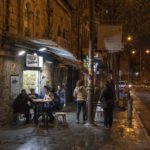
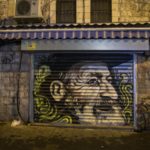
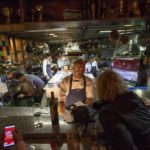
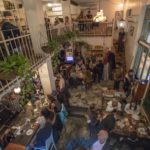
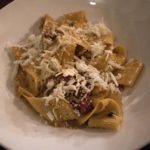
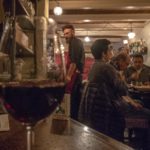
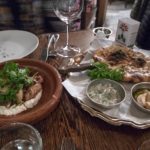

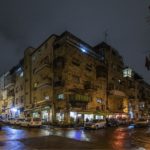
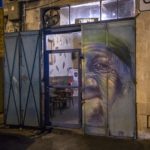
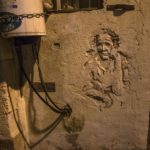
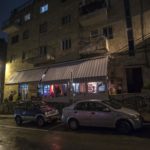
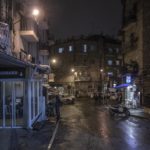
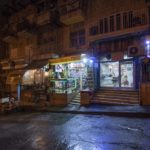
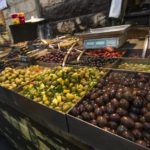
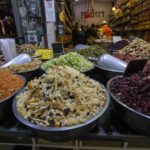
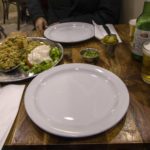
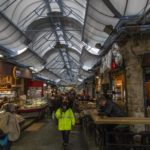
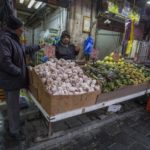
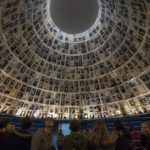
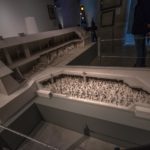

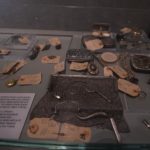
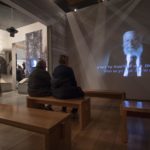
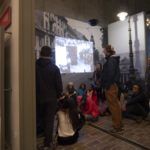
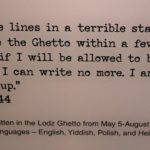
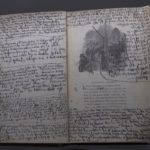
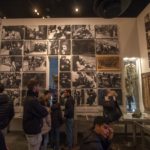
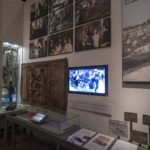
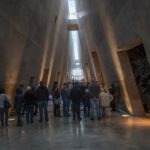
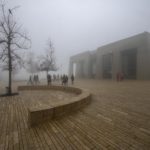
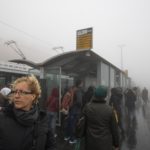

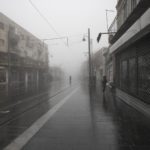
Pingback: Jerusalem (Part 2) – Old City – bontaks travels